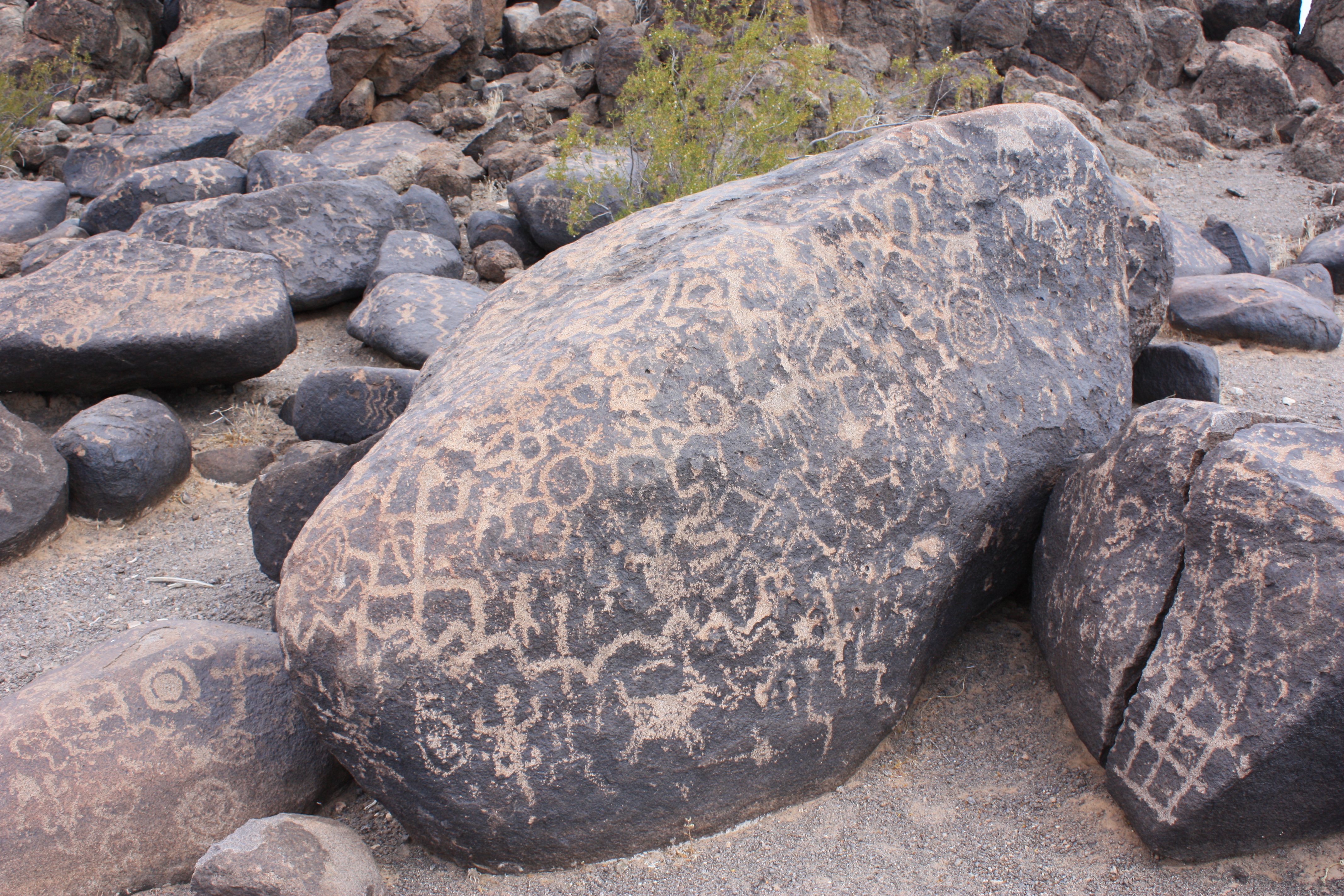Instinctively, I thought the name Phoenix came from the heat. Visiting in mid-March for Spring Training, the heat turns out to be not too bad, even cool in some evenings.
In fact, the name was suggested by a settler who saw in the 19th century in the vast flat farmland the potential for a civilization to rise again. Again? What was here before? One day of hiking, up to the White Tank Mountain Regional Park, gave a glimpse of at least one predecessor: the canal-building and petroglyph-happy Hokokum.
Their canals have faded beyond recognition, but the petroglyphs were abundant and in high quality. The incomprehensibility added to the allure. Various signs hectored the viewers not to assume the art was graffiti — though how does one know?

Latter day civilization was the main goal of the trip: Cactus League spring training and get a feel for the area.
Three games in three days is a lot of baseball, especially when it is largely of players either fully secure in their position and avoiding injury or not ready to be major leaguers. The pace of play was saddled with the same interminably slow pace and ample pitching changes of regular season ball. The high and low light: New Cincinnati Red Yasiel Puig hit two home runs in one game, though didn’t bother very much with two fly balls in the same. We also got to see Indians’ ace Corey Kluber up close.
The three different stadiums we attended had none of the charm of either the grand new Major League ballparks of the last quarter century, nor the often charming quirks of current minor league ballparks. I suspect the other stadiums are the same. They all had inadequate parking, an astonishing oversight for such a car-centered land. They did have appealing center field berms for fans to sit the grass and watch the games.


The days of spring training allowing fans to be closer to the players, or avoiding major league prices for tickets and refreshments are long gone. This made learning that many of the staff and ushers at the stadiums are local volunteers laughable. Just how bored are retirees to do this for free? Do they at least get free food? They were kinder and more welcoming than regular season ushers.
A unexpected highlight was the Musical Instrument Museum (MIM). Apparently one of its kind, it had an unparalleled collection of instruments from virtually every corner of the globe, sorted by country/region. This made it easy to see regional variants, though also to be a bit too granular and easy to miss the big picture. MIM doesn’t really offer a history of music, though of course some of it can be interpolated.

A Harp Guitar close to entry to whet your appetite 
Each country had a display, with 3-5 music videos demoing instruments 
Dancers dresses topped off many collections – here is a Mongolian Shava 
A Peyongyeong (lithophone) 
A Salterio (plucked zither), Spanish 18th c. 
The cool curvature of the main walkway, 2nd floor
MIM’s outdoor courtyard beside the cafe was a pleasant respite after the exhaustive sensory extravaganza.
The Desert Botanical Garden also must be one of the most impressive of its kind. Sensibly given the weather, it is open well into the evenings to avoid mid-day heat. A good capstone prior to returning to the airport.

A saguro-shaped sculptured of pick-heads used to save local plants 
The ubiquitous Palo Verde (the green bark is chlorophyll) 
Spanish Bayonet 
A Fremont Cottonwood (Willow family) 
A glass sculpture, “Desert Towers” (2008)
Phoenix is Los Angeles, as if kept in the heat too long. There are many gems scattered about the city, some of which we didn’t have time to see (or were not open when we tried) such as the downtown library and art museum. So much of the character of the city seems indelibly inscribed from the 1980s philosophies of city planning, and attempts to concentrate institutions in one area (sporting venues downtown) feels forced. But well worth another visit.
Be First to Comment